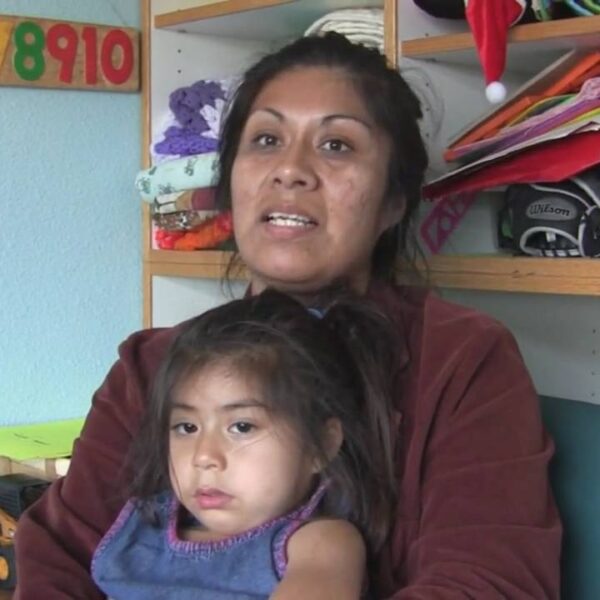In many ways Carmen is just like any other 16-year-old girl: friendly and outgoing, she loves dancing and is particularly talented as a creative artist. Despite her talents though, Carmen is facing a much steeper hill to climb when it comes to attaining her education and maintaining pace with her peers.
For the last two years Carmen’s family has been homeless.
During this time, her family has moved across state lines and from town to town as her parents have struggled to secure stable jobs. Most of the time her family has been living out of their car.
All young students struggle in their own ways but few have had to face the challenges that have become a daily reality of Carmen’s life. While many of her former classmates have begun to visit local colleges and universities, Carmen has yet to graduate the 8th grade.
She is falling behind in her studies and is beginning to lose hope.
Across the United States, there are many young students like Carmen.
And while many of their teachers and classmates may have no idea what they are facing, they are a part of our community and they need our help.
Homelessness Does not Discriminate
Homelessness is a social problem impacting communities across the United States. Families with children, single adults, teenagers and older individuals of all races struggle with the devastating effects of homelessness.
The fact is: homelessness does not discriminate. It impacts all kinds of individuals and families who have fallen on hard times. The primary cause of homelessness in the United States is the lack of affordable housing.
Low-income families struggle to earn enough money to attain the safety and security that they need to be able to rent or own their own homes.
According to Pew Research, while American paychecks have increased over the last 40 years, their purchasing power has barely budged.
In recent years, the American economy has taken off. The promise of prosperity has become more certain for the middle and upper class. At the same time, it has placed a tremendous strain on the rental market. This has left many lower income families to find themselves marginally housed or homeless.
Families are the fastest growing demographic of homeless in the United States. We must reverse this trend.
Family Homelessness is a Bigger Problem than Many Realize
Did you know that families account for about 50% of the national homeless population
According to the Department of Education, as many as 1,355,821 children and youth were identified as homeless and enrolled in public schools during the 2016-17 school year. During this time, these young people stayed in homeless shelters (14%), motels (6%), unsheltered (4%) and temporarily with relatives or friends (76%).
Family homelessness places children and young adults like Carmen into precarious situations. Instead of having comfortable and quiet places to study and complete homework, homeless and marginally housed youth are forced to complete assignments in crowded and potentially dangerous areas.
Homeless and marginally housed youth have:
- higher levels of emotional and behavioral problems
- increased risk of serious health problems
- are more likely to be separated from their families
- experience greater difficulty to achieve success in educational settings
Childhood and adolescence are meant to be a time of discovery and wonder. A time to create and dream, reflect and play. Unfortunately for many children growing up without the safety and security of permanent housing, youth is a time of danger and risk.
Many homeless youth begin to skip classes by middle school. Family members often pressure youth to begin working to help their families make ends meet. By the time they reach high school, many drop out and find themselves struggling with addiction, prostitution and incarceration. That’s if they are able to make it that far.
This is not the youth America’s children deserve.
The Solution to Family Homelessness
For homeless families, the number one barrier to the safety and security of permanent housing is the lack of affordable options.
It is for this reason that I believe the solution to ending family homelessness is taking steps to ensure that each community has a wealth of housing options on the market so as to meet the needs of all members of society. The free market alone may not be able to achieve the conditions necessary to promote the best possible quality of life for all citizens.
The United States is one of the most innovative and prosperous nations in the entire world. Yet our homelessness problem is larger and more severe than anywhere else. We will not be able to move forward as a nation and people until we address the economic disparity that has created such a tremendous gap between those living at the highest levels of our society and those living at the bottom.
Family homelessness reflects a dark truth about the way that we were. But it does not have to be the end of the story. One of the unforeseen benefits of homelessness and the efforts to address it, is the amazing depth and wellsprings of resilience they have revealed.
Resilience is defined as the power to survive, the will to overcome even the most troubling of situations and circumstances. Facing situations like family homelessness, it is our collective resilience as a nation that is our greatest asset.
Each Member of Our Society Is Valuable
Every family deserves an equal opportunity to live, learn and prosper. We are strong and we have the power to overcome the pain and uncertainty of family homelessness.
It will take a holistic and community-wide approach to reform our economy and social conventions. But it can be done.
We can eradicate homelessness in this lifetime.
We can ensure that all American youth have access to a high quality education.
We can strengthen our communities and create a better way of life for our people.
What Can You Do? Get Involved!
Your voice can help end homelessness. We’ve made it easy for you to contact your federal and state legislators and tell them ending homelessness is a priority to you. Click Here to Get Involved!













